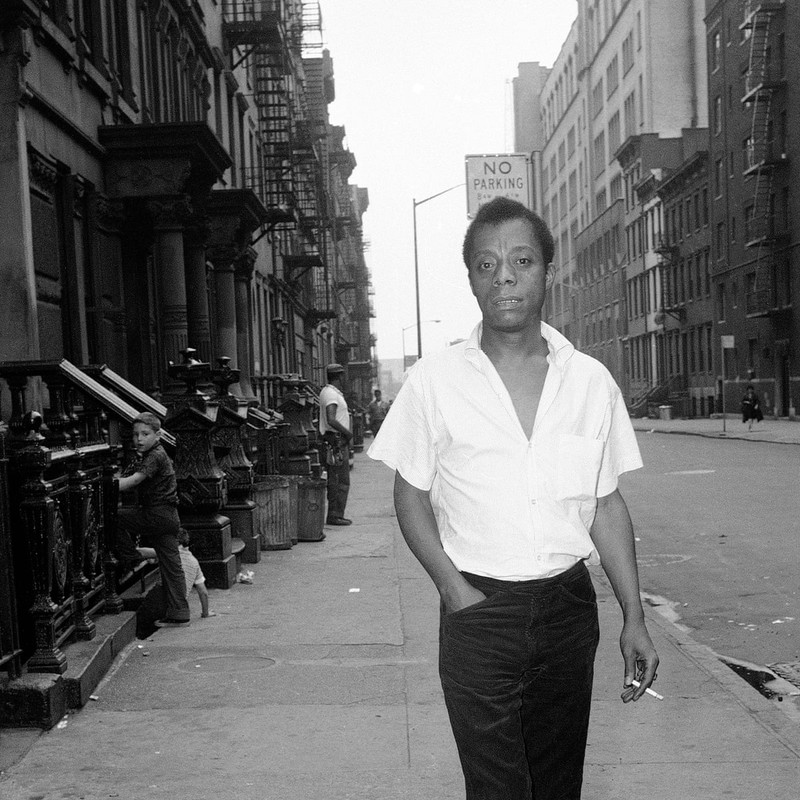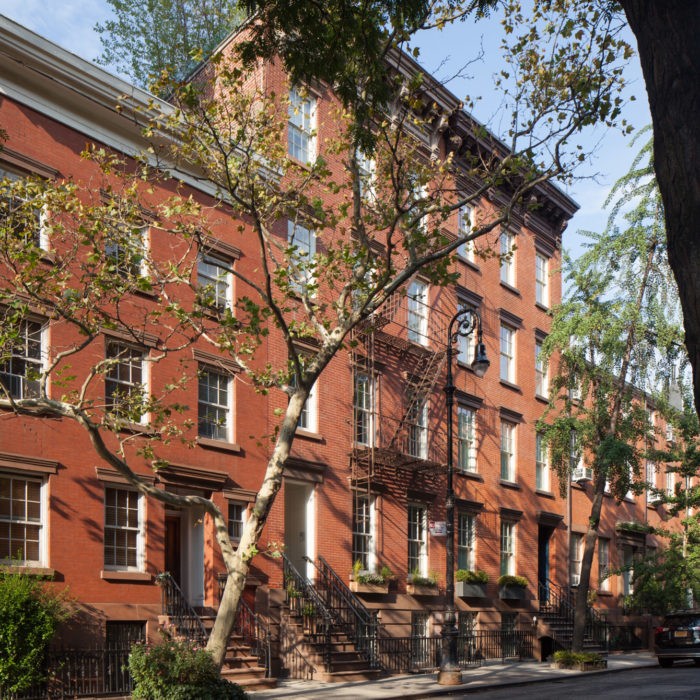Former Residence of James Baldwin (1958-1961)
Introduction
Text-to-speech Audio
Images
James Baldwin

Baldwin's former residence (in the center)

Backstory and Context
Text-to-speech Audio
James Baldwin was born in Harlem in 1924. His family was poor and he often struggled with his relationship with his overly strict step-father, as well as his own conflicted feelings regarding religion. Race was a ever-present theme in his life, and he would later write that on the day of his step-father's funeral, a violent race riot erupted in Harlem. As a young adult, he left his family's home and moved to Greenwich Village. With its colorful, bohemian atmosphere, Baldwin expected to find a more hospitable environment in the Village, but working at a series of menial jobs in the neighborhood's restaurants, he found that racism extended even into the city's most tolerant enclave.
In 1948, at the age of 24, Baldwin left the United States after several difficult years in the Village. He headed for Paris, driven out of the United States because of its pervasive racism as well as his desire to be able to turn an outsider's eye on the country of his birth. For much of the rest of his life, Baldwin would live in France, as well as Switzerland and Turkey. During his time in Paris, he continued writing and his work was published in several anthologies.
But Baldwin's peripatetic nature often brought him back to New York. By the mid-1950s, he was back in the city and living again in Greenwich Village. For a time, he lived with the Swiss painter Lucien Happersberger, whom he met in France, on Gay Street. In 1958, he moved to the apartment on Horatio Street, which, he noted, was already home to two African American men. The building was also home to one of Baldwin's closest friends, Sam Floyd. By the time Baldwin returned to the Village, he was an established and respected writer who relished the unconventional nature of the Village and its colorful denizens. The two friends often entertained friends in one apartment or the other (usually Floyd's), and their guests included some of the most influential thinkers of the day, including historian Jessica B. Harris and civil rights leader Stokely Carmichael.
During the three years that Baldwin lived on Horatio Street, he continued working on his third novel, Another Country, which he began in 1948. Likely a highly autobiographical work, the novel details the struggles of a young African American musician as he attempts to make a life for himself in Greenwich Village. The novel was published in 1962. Well-known for his writing as well as his observations on race, sexuality, and the civil rights movement, Baldwin's admirers frequently gathered outside the building in hopes of catching a glimpse of the writer. He moved out of the apartment in 1961.
In the years since Baldwin lived in the building, it has been converted into a single-family residence, as it was originally. A plaque on the exterior identifies it as Baldwin's former home.
Sources
American Masters: James Baldwin, PBS. November 29th 2006. Accessed November 28th 2020. https://www.pbs.org/wnet/americanmasters/james-baldwin-about-the-author/59/.
The Henry James of Harlem: James Baldwin's Struggles , The Guardian. September 14th 2001. Accessed November 28th 2020. https://www.theguardian.com/books/2001/sep/14/jamesbaldwin.
James Baldwin Residence , NYC LGBT Historic Sites Project. Accessed November 28th 2020. https://www.nyclgbtsites.org/site/james-baldwin-residence-2/.
Bubbins, Harry . Remembering James Baldwin , Village Preservation . December 1st 2017. Accessed November 28th 2020. https://www.villagepreservation.org/2017/12/01/remembering-james-baldwin/.
